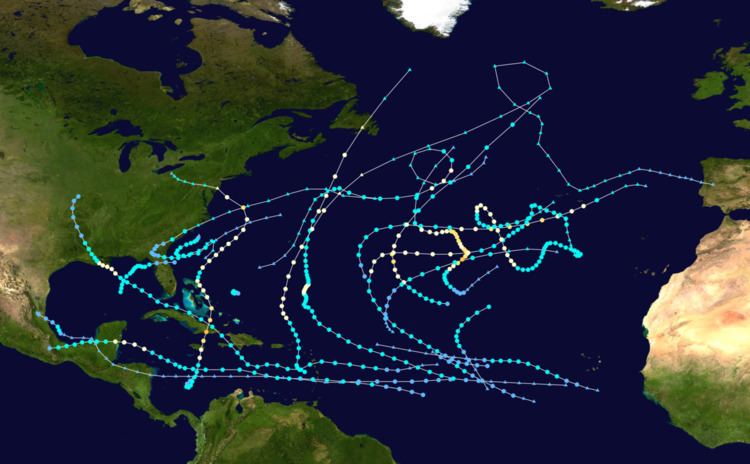 | ||
The 2012 Atlantic hurricane season featured the third-most named storms for the third consecutive year on record. Though the season officially began on June 1 and ended on November 30, dates which conventionally delimit the period of each year when most tropical cyclones develop in the Atlantic basin, two storms – Alberto and Beryl – developed before the official start, on May 19 and May 26, respectively; this was the first such occurrence since the 1908 season. The season's final storm to form, Tony, dissipated on October 25, although the previous cyclone, Sandy, did not do so until four days later.
Contents
The season produced nineteen tropical cyclones, all of which intensified into tropical storms; ten became hurricanes, but only two strengthened into major hurricanes. Storm impact during the season was widespread and ruinous, with the most significant storms in term of loss of life and damage being hurricanes Isaac and Sandy. A Category 1 on the Saffir–Simpson hurricane wind scale, Isaac was a large system that moved ashore the coast of Louisiana on August 12; the storm resulted in 41 deaths overall. Sandy, the second and final major hurricane of the season, was the largest Atlantic hurricane ever recorded, with a wind diameter of more than 1,100 mi (1,800 km). The system moved ashore the southern coast of New Jersey as an extratropical cyclone in late October. During its duration as a tropical cyclone, Sandy caused at least $68 billion (2012 USD) in damage and 285 fatalities. Sandy is the second-costliest Atlantic hurricane in recorded history, surpassed only by Hurricane Katrina during the 2005 season.
This timeline includes information that was not operationally released, meaning that data from post-storm reviews by the National Hurricane Center, such as a storm that was not operationally warned upon, has been included. This timeline documents tropical cyclone formations, strengthening, weakening, landfalls, extratropical transitions, and dissipations during the season.
